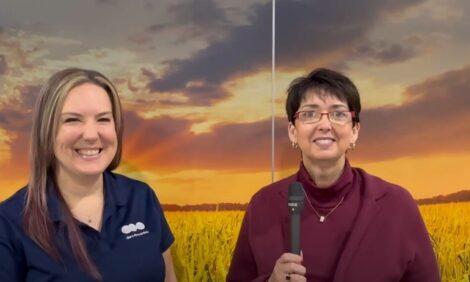



Genetic Selection May Help Improve Walking Ability of Turkeys
Dr Edgar Oviedo-Rondón of North Carolina State University reviewed his work into the relationship between gait parameters and bone strength in turkeys at the 3rd Turkey Science and Production Conference earlier this year. Jackie Linden summarises his paper for ThePoultrySite."Walking ability in poultry is considered an important welfare parameter but it is also critical for obtaining optimum flock performance, reducing bone disorders, improving bone strength, reducing skeletal fractures, reducing plant condemnations issues and improving food safety," said Dr Oviedo-Rondón in the introduction to his presentation at the conference in Macclesfield, UK, in April.
He said that leg problems have been observed in between two and six per cent of turkey flocks, and that 30 to 65 per cent of meat-type poultry flocks have some form of 'abnormal' gait without any bone problems. This emphasises that leg problems are related not only to bone but also to tendons, joints and ligaments and any irregularities early in life can impact locomotion later.
Dr Oviedo-Rondón focussed in his presentation on the relationship between walking ability and bone strength in turkeys. "The ability and frequency of voluntary locomotion is initially more related to behaviour, body conformation, hormonal levels and metabolism, the flexibility of the joints and the strength of muscles and tendons than it is to bone growth and disorders," he explained.
Due to the complexity of all these factors and interactions, improving walking ability while maintaining the desired bodyweight gain remains a formidable challenge for poultry production, he added.
Spontaneous fractures of the main leg bones – the tibia and femur – have become more frequent in fast growing turkeys, it has been observed, but the reasons are unclear. Bone strength is known to be related to bone mineral density and the forces applied during physical activity.
Dr Oviedo-Rondón and colleagues conducted an experiment to see the how gait patterns affect the biomechanical properties of bone in 'normal' turkeys and those with leg defects. They divided the birds into four groups – normal, valgus, crooked toes and shaky legs – based on digital analysis of video images, and then euthanised the birds to analyse the leg bones. There were no significant differences between the groups in morphological measurements or tibia strength. However, they did find differences in regional ossification of the tibia, which may have an impact on osteochondrosis – a condition known to cause pain and immobility in some animals.
In summary, the group found that crooked toes and shaky legs occur early in development and affect gait and bone mineral density, which could impact the incidence of fractures.
Moving on to role of genetics, Dr Oviedo-Rondón's group studied bone biomechanical properties in four strains of Nicholas turkeys. They found differences in the bone properties, which were correlated with the incidence of leg problems in each strain. Stronger bones were associated with higher bone mineral density, tibial cortical thickness and smaller femur diaphyseal angle.
In conclusion, Dr Oviedo-Rondón highlighted that flock performance can be improved and bone disorders minimised by improving walking ability. For the flock as a whole, this is related to body conformation, flexible joints, strong tendons, behaviour and cognition. For individual birds, severe bone disorders and leg misalignment may affect walking ability, and hence, bone development.
Management and nutrition have only limited impact on these critical factors, said Dr Oviedo-Rondón. He added, "Future genetic selection methods should be based on biomechanical parameters of gait and knowledge of tendon and muscle development."
Further Reading
| - | For further information on 3rd Turkey Science and Production Conference, please contact its organiser, Dr James Bentley ([email protected]). |
June 2009








